I. Introduction
Egyptian mythology, a tapestry woven with tales of gods, pharaohs, and cosmic occurrences, has played a paramount role in shaping the cultural, spiritual, and societal structures of ancient Egypt. Rooted deeply in the Nile’s fertile banks, these myths weren’t merely stories; they were reflections of life, death, and the intricate balance between the two. At the heart of these narratives stands Anubis, often depicted with the head of a jackal, serving as both the protector of the dead and the vigilant overseer of mummification. His significance extends far beyond his hieroglyphs, reminding us of humanity’s timeless pursuit of understanding the afterlife. In today’s era, where myths are often relegated to mere tales, delving into the stories of deities like Anubis offers a mirror to our ancestors’ beliefs, hopes, and fears. Such exploration bridges the temporal gap, emphasizing the importance of appreciating historical deities in the context of our modern perspectives.
| Origin | Ancient Egyptian Civilization |
|---|---|
| Classification | God |
| Family Members | Nephthys (Mother), Set (Father), Osiris (Adoptive Father) in many accounts |
| Region | Egypt |
| Associated with | Mummification, Afterlife, Death, Embalming, Cemeteries |
II. Historical Origins and Role of Anubis
The Old Kingdom period, spanning from c. 2686 BC to 2181 BC, marks one of the most formative eras in ancient Egyptian history. As pyramids started gracing the horizon and pharaohs established their divine rule, the pantheon of Egyptian gods took a more definitive shape. Among the deities revered during this epoch, Anubis held a position of distinct prominence. His worship, intertwined with the Egyptian populace’s daily life, mirrored their perception of life, death, and the afterlife.
Ancient Egyptian religious practices, especially during the Old Kingdom, were more than mere rites; they were an embodiment of the collective consciousness. Temples dedicated to Anubis became places not only of worship but also of solace. Ceremonies performed in his honor sought to bridge the chasm between the living and the dead, echoing the sentiment that death was not an end, but a transition.
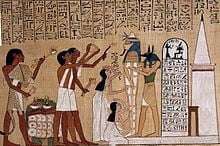
Delving deeper into the mythology, Anubis’s role becomes even more nuanced. As the guardian of the dead, he bore the solemn responsibility of ensuring that souls transitioned safely from the mortal realm to the afterlife. His iconic depiction, often as a man with a jackal’s head or sometimes fully as a jackal, symbolized his eternal vigilance over cemeteries and his protective nature towards the deceased. But his duties extended beyond mere guardianship. Anubis played an instrumental part in the posthumous journey of souls. He would guide them, stand by them during the pivotal “Weighing of the Heart” ceremony, and ensure that they found their rightful place in the vast expanses of the afterlife. His role, thus, was not just of a protector but also of a guide and a confidant.
III. Iconography and Representation
One of the captivating facets of ancient Egyptian deities is their vivid and symbolic representation. Anubis, with his distinct imagery, stands out even amidst this illustrious pantheon.
When we examine Anubis’s Physical Appearance, it’s impossible to miss the fusion of the human and the animal – a testament to the union of human beliefs with nature’s potent symbols. Typically represented as a black jackal or as a man with a jackal head, this dark hue was not chosen arbitrarily. Black, in the ancient Egyptian palette, was the color of regeneration, rebirth, and the fertile black soil of the Nile – alluding to Anubis’s role in rebirth and the afterlife.
Delving deeper into the Symbolism of the Jackal, this creature wasn’t chosen merely for its imposing visage. Jackals were frequently seen in cemeteries, and their nocturnal nature made them a symbol of the mysterious and the unknown. To the ancient Egyptians, these creatures, which thrived on the borders of the desert and the fertile land, symbolized the boundary between life and death. Their association with graveyards and the fact that they often scavenged on the remains of the deceased solidified their connection with death rituals, making them a natural emblem for a god overseeing mummification and the journey to the afterlife.
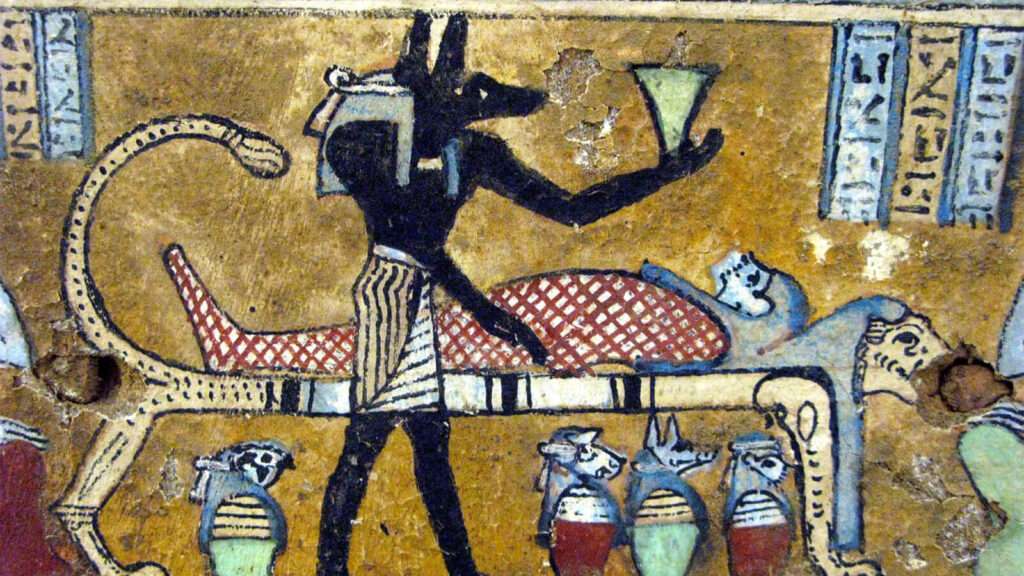
Anubis’s importance is further accentuated when we look at the Major Temples and Worship Centers dedicated to him. Among the most notable is Cynopolis, or the ‘City of the Dog’, located in Upper Egypt. This city, pivotal in religious and ceremonial contexts, was a nexus for Anubis worshippers. Here, grand ceremonies honoring the deity were conducted, and it was believed that the very air resonated with Anubis’s protective energy. Cynopolis wasn’t merely a religious site; it was a testament to the profound impact Anubis had on the collective psyche of ancient Egyptians, reflecting their hopes, beliefs, and their profound understanding of life’s transient nature.
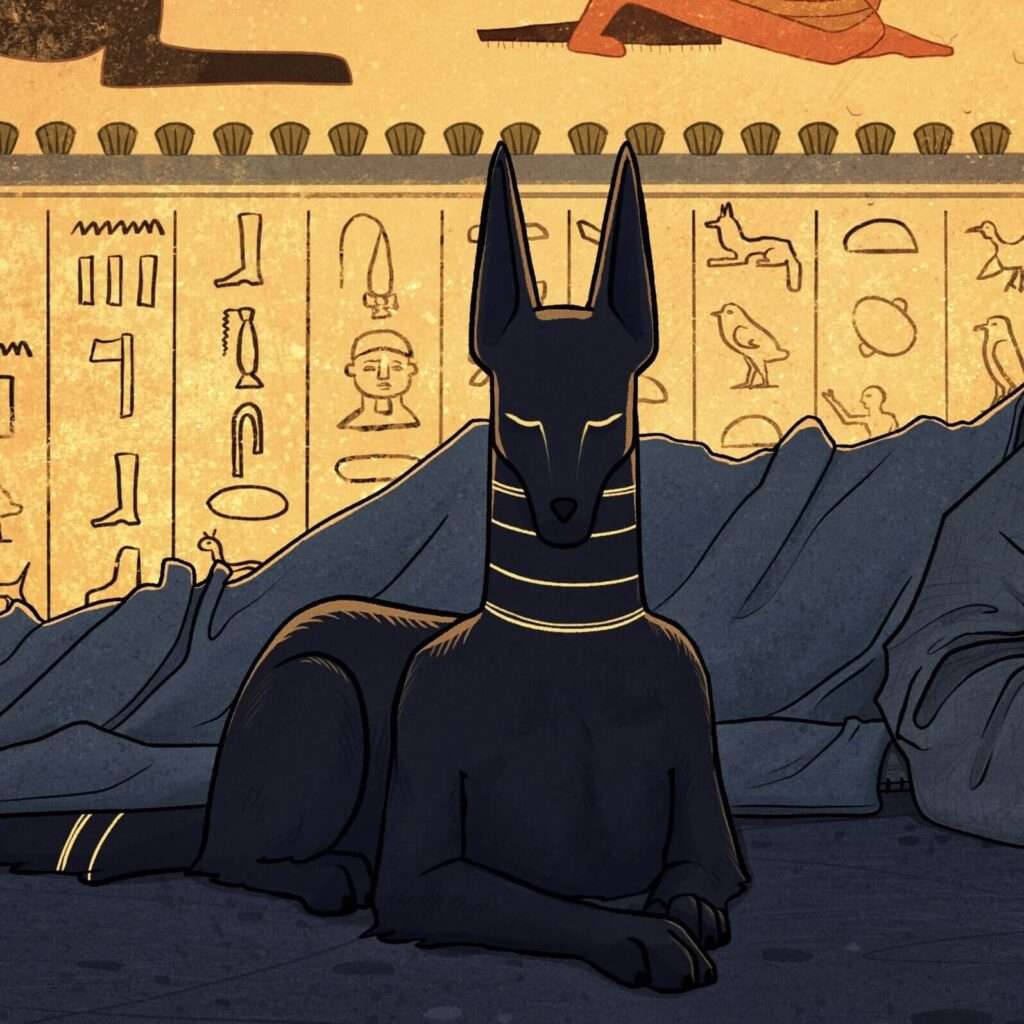
IV. Tales and Legends Associated with Anubis
Deep within the annals of Egyptian lore, tales of gods, mortals, and the intricate dance between life and death unfold. Anubis, with his significant role in the cosmic play, is central to many of these narratives.
The Weighing of the Heart Ceremony stands as a pivotal tale in Egyptian mythology, with Anubis playing a central role. More than a mere myth, this ceremony symbolized ancient Egyptian views on life, morality, and the afterlife. Anubis oversaw the process in which the souls of the deceased underwent judgment: their heart, signifying their deeds, was weighed against the feather of Ma’at. If the heart balanced with the feather, it meant the soul was worthy of the afterlife. His role went beyond supervision; he embodied fairness, ensuring the scales’ truth. The concept of Ma’at, representing balance and justice, was integral. It wasn’t an abstract concept for Egyptians but the essence binding the cosmos. The ceremony, thus, was a profound affirmation of cosmic justice.
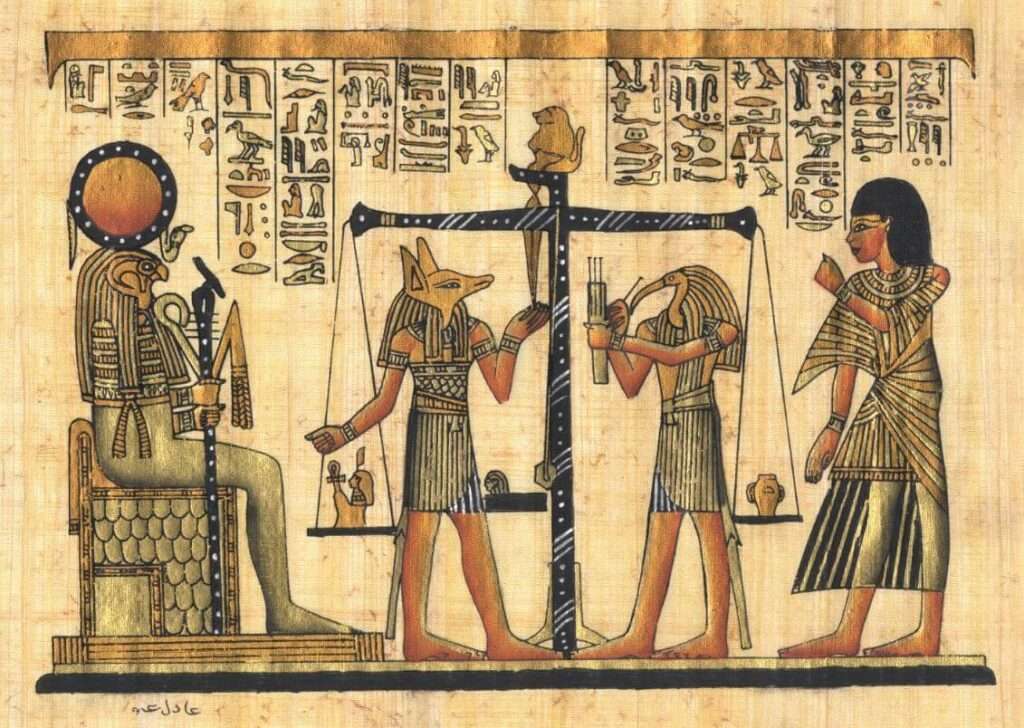
Anubis’s tales also intricately weave with those of Other Deities. His relationships with gods like Osiris, Isis, and Set are not only tales of camaraderie, conflict, and cosmic duties but also reflect the evolving dynamics of Egyptian religious practices. For instance, with the ascendancy of Osiris as the god of the afterlife, Anubis’s role saw a transformation. Initially revered as the main deity of the dead, Anubis gracefully transitioned to a more specialized role post the rise of Osiris. While Osiris became the lord of the afterlife, Anubis retained his importance as the god of mummification and the primary guide of souls. His relationship with Isis, marked by mutual respect, aided in the resurrection of Osiris after Set’s betrayal. These myths, more than just divine tales, provide a window into the shifting sands of religious beliefs and practices over time.
V. Modern Interpretation and Influence
While rooted in the annals of ancient history, Anubis’s legacy permeates our modern world, reshaped by contemporary interpretations yet remaining tethered to its original essence.
In Pop Culture References, Anubis has experienced a renaissance, surfacing in various avatars across modern media, films, and literature. Hollywood, often intrigued by the enigma of ancient deities, has cast Anubis in roles ranging from the protector of tombs in action-packed adventures to a guide for souls in poignant depictions of the afterlife. Literature, both fiction and non-fiction, has delved into his myths, either reimagining them for a modern audience or academically dissecting his significance in ancient Egypt. Video games and graphic novels, too, haven’t been immune to Anubis’s allure, often portraying him with a blend of reverence and modern reinterpretation. While these portrayals vary in accuracy, they unanimously underscore Anubis’s undying appeal and the universality of his themes: life, death, and what lies beyond.
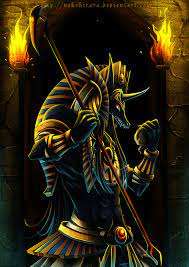
Modern Worship and Revival presents another facet of Anubis’s enduring influence. While mainstream worship of Anubis, akin to ancient times, has waned, there are pockets of revival, particularly within certain neo-pagan and Kemetic groups. For them, Anubis isn’t just a historical deity but a living presence, guiding them in rituals and practices reminiscent of the old yet adapted for the present. Within the broader scope of neo-paganism, Anubis holds a significant place, often invoked for his wisdom, protection, and guidance in spiritual practices that bridge the ancient and the contemporary. These modern-day adherents, though few, ensure that the flame of Anubis worship, albeit in a transformed manner, continues to burn, reaffirming the timelessness of the jackal-headed god.
VI. Conclusion
Traversing the corridors of time, the legacy of Anubis stands as a testament to the ageless allure of myth, mystery, and mankind’s eternal quest to understand the enigma of existence. From the dusty tombs of ancient Egypt, where he stood as a vigilant guardian, to the screens of our modern theaters and pages of contemporary novels, Anubis’s essence remains undiluted. His enduring impact is not just a reflection of his multifaceted role in Egyptian mythology but also an acknowledgment of the universal themes he embodies: the cycle of life, the mystery of death, and the hope of rebirth.
As we reflect on Anubis, it’s imperative to recognize that he is but a single star in the vast constellation of Egyptian mythology. Each deity, each myth, and each ritual carries its own weight of stories, lessons, and insights. The world of Egyptian myth is a labyrinth waiting to be explored, where every turn reveals tales of valor, love, betrayal, and cosmic dances. To the curious reader, Anubis’s tale is but a gateway. Beyond lies a realm rich with narratives that have, for millennia, shaped minds, cultures, and civilizations. In delving deeper into these stories, we not only connect with our ancestral beliefs but also discover reflections of our own hopes, fears, and aspirations.
The tales of the past beckon. May the legacy of Anubis and the pantheon of ancient Egypt inspire a renewed passion for exploration, understanding, and appreciation of the myths that have, in many ways, shaped the tapestry of human history.
